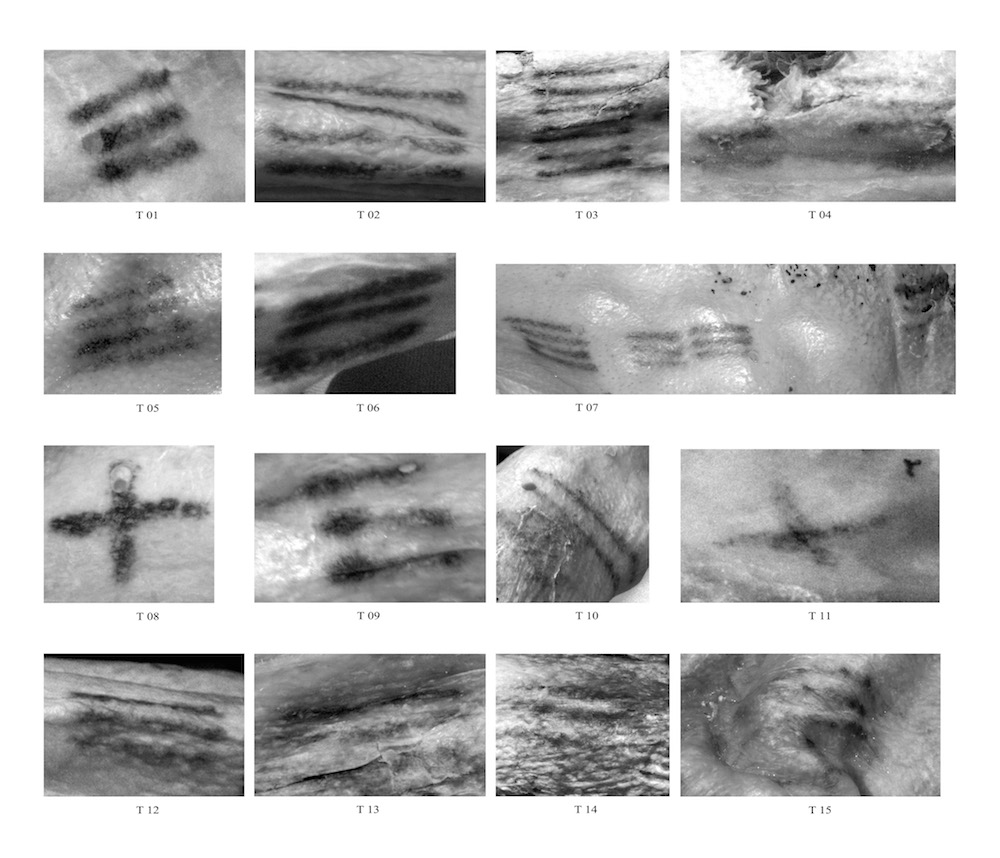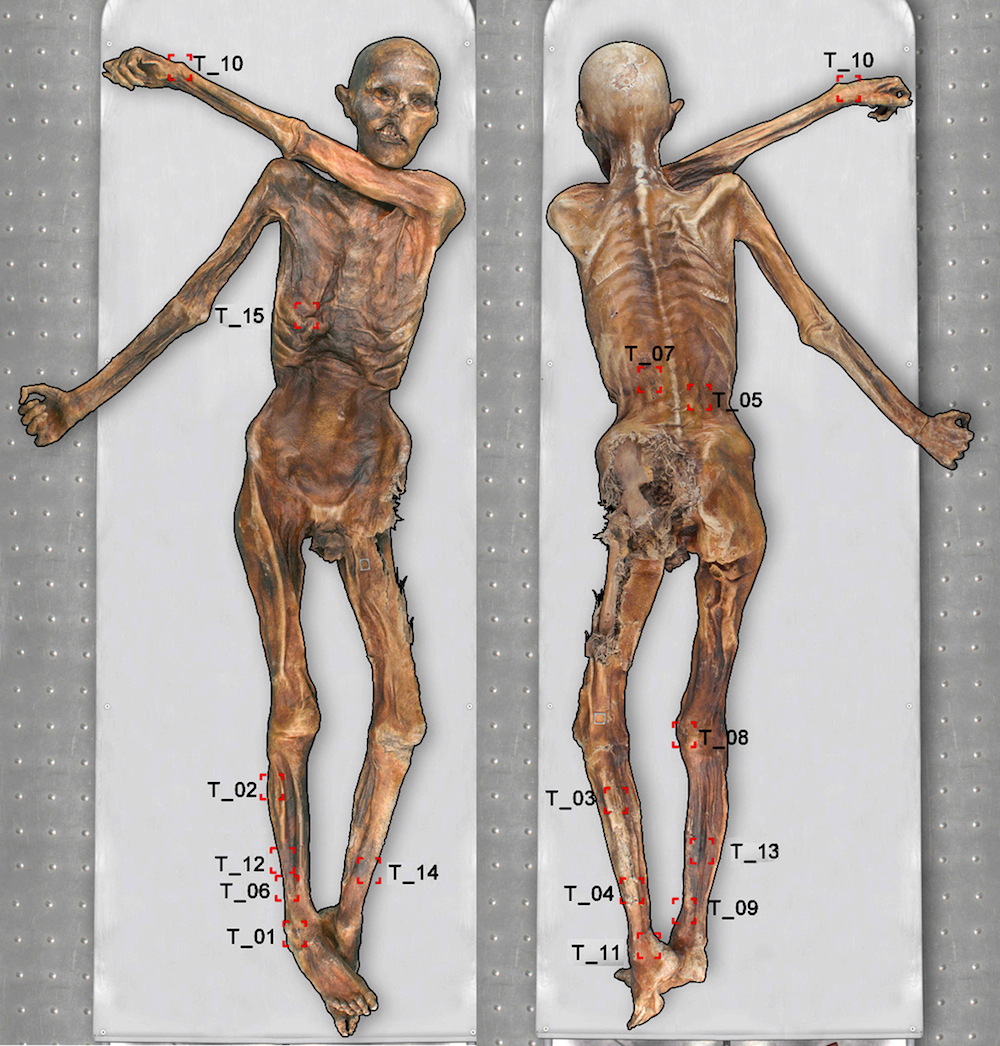Fresh Ink: Mummified Iceman Has New Tattoo

Four thin, black lines, stacked on top of each other, bring the total number of tattoos on Ötzi, a 5,300-year-old mummified iceman, to 61, according to an exhaustive new study.
Finding the new body art, located on the lower side of Ötzi's right ribcage, "was a big surprise because we didn't expect to see a new tattoo," said Albert Zink, the study's senior researcher and head of the Institute for Mummies and the Iceman at the European Research Academy in Italy.
Ötzi's tattoos are no secret: Even the hikers who discovered him in the Italian Alps in 1991 noticed he had markings on his skin. But researchers have disagreed about the number of tattoos on Ötzi’s body for years, and "we decided it would be important to have a clear number of the tattoos" going forward, Zink told Live Science. [Mummy Melodrama: Top 9 Secrets About Otzi the Iceman]
To investigate, the researchers used technologies developed for the art world: a camera with specialized lenses that can determine whether an artist painted over another painting on the same canvas. The various lenses can capture different wavelengths of light, ranging from ultraviolet light at 300 nanometers (billionths of a meter) to infrared light at 1,000 nm. (Visible light extends from about 400 nm to about 700 nm.)
All 61 of the tattoos are made of black lines, measuring 0.3 inches to 1.6 inches (0.7 to 4 centimeters) in length and arranged in groups of two, three or four parallel lines, the researchers said. Two of the tattoo groups, one on the right knee and another on the left Achilles tendon, look like plus signs.
Prehistoric tattoos
The newly discovered tattoo is difficult to see because the mummy’s skin has darkened over time, and the tattoos themselves are black.
Sign up for the Live Science daily newsletter now
Get the world’s most fascinating discoveries delivered straight to your inbox.
"We know that they were real tattoos," Zink said. The tattoos' creators "made the incisions into the skin, and then they put in charcoal mixed with some herbs."

The other tattoos are mostly on Ötzi’s lower back and on his legs, between the knee and the foot. But it's unclear why Ötzi had these tattoos, and whether they had therapeutic, symbolic or religious significance, the researchers said.
"Many people think that it was a kind of treatment because most of the tattoos are very close to areas where he probably suffered from pain," Zink said.
It's possible that the tattoos served as a medicinal form of acupuncture to treat injuries or chronic pain, studies report, including a 2013 study in the journal Inflammopharmacology.
For instance, many of the tattoos are located on the mummy's lower back and near joints, places where Ötzi may have experienced pain, Zink said. The iceman likely also had problems with his knees and ankles, both of which are covered with tattoos, because he walked so much in the Alps.
The new ribcage tattoo isn't located on the iceman's back or on a joint, but "on the other hand, he could have suffered from chest pain," Zink said. The mummy may have also suffered from other conditions, such as gallstones, whipworms in his colon or atherosclerosis, a condition in which plaque builds up in the arteries, Zink added.
The ribcage tattoo could also be a spot where Ötzi felt "referred" pain, or pain at a site that is distant from the actual pain, said Dr. Walter Kean, a clinical professor of rheumatology at McMaster University in Canada who has studied Ötzi, but was not involved with the new study.
The findings were published Jan. 20 in the Journal of Cultural Heritage.
Follow Laura Geggel on Twitter @LauraGeggel. Follow Live Science @livescience, Facebook & Google+. Original article on Live Science.

Laura is the archaeology and Life's Little Mysteries editor at Live Science. She also reports on general science, including paleontology. Her work has appeared in The New York Times, Scholastic, Popular Science and Spectrum, a site on autism research. She has won multiple awards from the Society of Professional Journalists and the Washington Newspaper Publishers Association for her reporting at a weekly newspaper near Seattle. Laura holds a bachelor's degree in English literature and psychology from Washington University in St. Louis and a master's degree in science writing from NYU.










